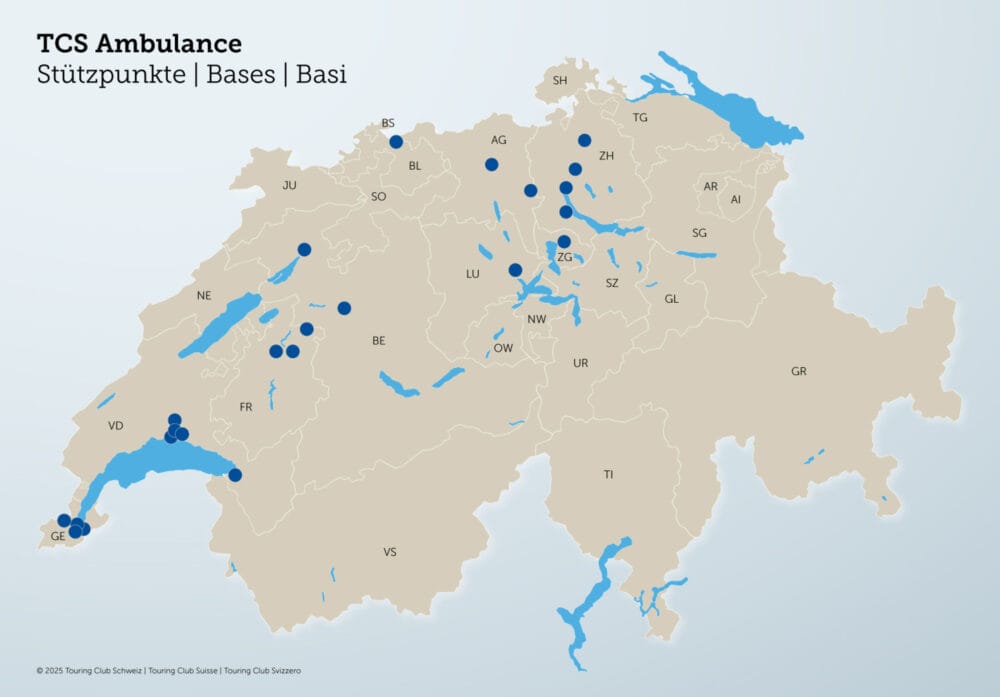Accident or illness?
Is the back pain the result of an accident or an illness? These criteria determine whether the accident insurance will pay for the benefits.

In the event of an accident or occupational illness, persons insured with Suva are entitled, among other things, to medical treatment and daily allowance or pension payments. In addition, they are supported in rehabilitation and reintegration.
But time and again there are cases in which it is unclear which insurance company covers the treatment costs or daily allowances. Is it the accident insurance? Or possibly the health insurance? And what difference does it make to the injured or ill person who ultimately pays? The term "accident" is defined by law. If one of the specified factors is missing, an event is not classified as an accident, but as an illness.
Difference between accident insurance and health insurance
Accident insurance provides benefits in the event of accidents, bodily injuries listed in the law and occupational diseases. If a case is taken over by the accident insurance, it settles the accident-related costs directly and without cost sharing by the insured person.
In the case of health insurance, on the other hand, the injured person usually has to finance the costs in advance. Depending on the chosen deductible rate and the deductible for benefits, additional costs arise for the person affected.
Whether a reported event constitutes an accident in the legal sense must be examined by Suva by law. Classifying a case correctly is not always easy, even for legal professionals. In their assessment, they follow the Federal Act on the General Part of Social Insurance Law (ATSG), the Accident Insurance Act (UVG), the Health Insurance Act (KVG) and the corresponding ordinances.
Definition of accident
By legal definition, an accident is a sudden, unintentional harmful effect of an unusual external factor on the human body that results in impairment of physical, mental and psychological health or death. If one of these aspects is missing, the event is not classified as an accident, but as an illness.
Examples "No accident
For example, suppose Gabriel, a prospective recruit, cuts off his finger to avoid military service. Because Gabriel acted with intent, the event is not classified as an accident.
Kathrin's case is also covered by the health insurance: The young woman has been suffering from extreme whistling in her ears since attending a rock concert. The accident insurance company's negative decision was based on the lack of a "suddenness" factor, since Kathrin had been exposed to the loud music for a long time.
In the example of Ernesto, who is lifting a heavy box at the construction site and suddenly gets shot in the back, the unusual external factor is again missing. Lifting heavy boxes is part of the normal activities of a construction worker.
Examples "Accident
The following events, on the other hand, meet all the criteria of an accident:
- Leila hits her mouth on the steering wheel when two car scooters collide, injuring her dental nerve.
- Bernhard is hit by a car on his way home on his bicycle. Isabelle runs down the stairs with a box.
- She overlooks a step and falls. Noah is bitten by a tick.
Occupational diseases
Under federal law, an illness is "any impairment of physical, mental, or psychological health that is not the result of an accident and that requires medical examination or treatment or results in incapacity for work."
Suva is only responsible for so-called "occupational diseases". Occupational diseases are diseases that are caused exclusively or predominantly by harmful substances or certain work during the occupation.

Exclusively or predominantly means that more than 50 percent of the illness must have been caused by the occupational activity. The causation percentage is determined by factors such as the duration of exposure, the concentration of the pollutant in the air, the noise intensity or the severity of the work. The harmful substances (e.g. ammonia, bromine or mercury) as well as the "certain work" (e.g. all work in noise that causes damage to hearing, or work in hospitals that causes infectious diseases) are listed in the Ordinance on Accident Insurance (UVV). However, diseases that are not listed in the ordinance can also be recognized as occupational diseases. The prerequisite for this is that an illness must be at least 75 percent caused by the occupational activity.
What is a list diagnosis?
In the case of health damage that has arisen both from accident-like events and from pathological or degenerative factors, the correct classification is difficult. By law, the following bodily injuries must be covered by the accident insurer, provided they are not primarily the result of wear and tear or disease:
- Dislocations of joints
- Meniscus tears
- Muscle tears
- Muscle strains
- Tendon ruptures
- Ligament lesions
- Tympanic membrane injuries
Further information:
Ordinance on Accident Insurance (UVV)
More information and case studies
Source: Suva









